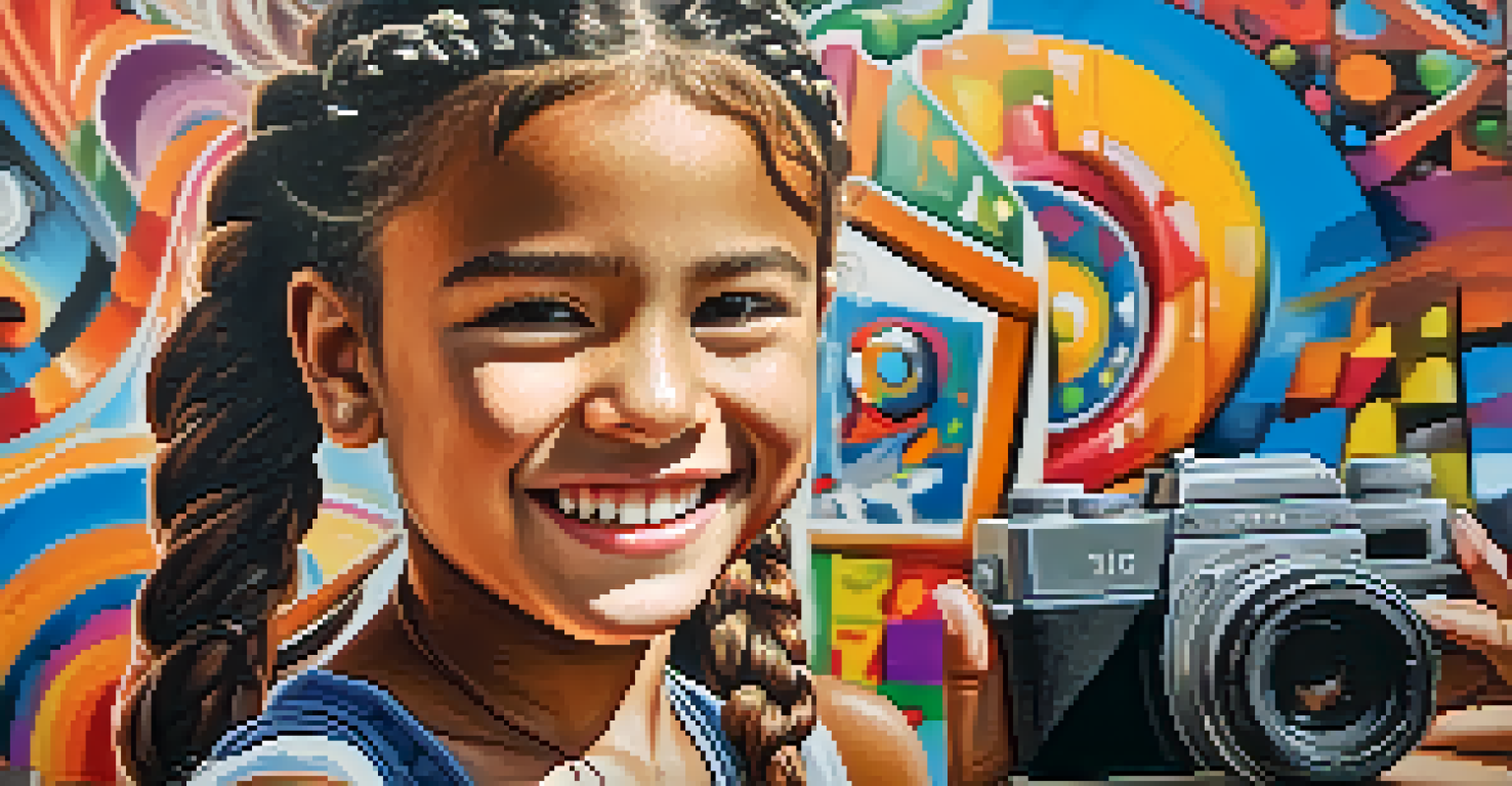Youth Representation in Film: A Diverse Perspective

Understanding Youth Representation in Film Today
Youth representation in film is more than just casting young actors; it's about authentically portraying their experiences. Today's films must reflect the diverse backgrounds, cultures, and identities of young people. This representation is crucial because it shapes how youth see themselves and others in society, influencing their self-esteem and worldviews.
Film has the power to shape our perceptions and influence the way we think about ourselves and others.
Historically, young characters in films have often been sidelined or depicted in a one-dimensional manner. However, as society evolves, there’s a growing recognition of the need for nuanced portrayals that resonate with actual young people's lives. This shift not only creates more relatable content but also empowers young viewers to feel seen and heard.
When films showcase a wide range of youth experiences, from race and gender to socioeconomic backgrounds, they contribute to a more inclusive narrative. For instance, movies like 'The Hate U Give' and 'Eighth Grade' highlight the complexities of youth life, addressing issues like racism, mental health, and social media pressure.
The Impact of Diverse Representation on Young Audiences
Diverse representation in film affects young audiences in profound ways. When they see characters that look like them or share similar experiences, it fosters a sense of belonging. This connection can enhance their emotional well-being, encouraging them to embrace their identity and feel valued in society.

Moreover, exposure to diverse characters allows young viewers to develop empathy and understanding for those who are different from them. Films that include various perspectives challenge stereotypes and promote dialogue about important social issues. For example, films featuring LGBTQ+ youth help normalize diverse sexual orientations and encourage acceptance among peers.
Authentic Youth Representation Matters
Films must authentically portray diverse youth experiences to positively influence self-esteem and worldviews.
As young audiences consume content, they become more discerning about representation. They are likely to support films that portray authenticity and inclusivity, which can influence filmmakers' decisions. This power of choice highlights how crucial youth voices are in shaping the future of cinema.
The Role of Filmmakers in Promoting Youth Diversity
Filmmakers play a pivotal role in shaping how youth are represented on screen. By prioritizing stories that reflect a variety of youth experiences, they can contribute to a broader cultural narrative. Diverse filmmakers also bring unique perspectives and insights, enriching the storytelling process.
Diversity is being invited to the party; inclusion is being asked to dance.
Encouraging collaboration with young writers, directors, and actors can lead to more authentic storytelling. When young talent is given the opportunity to share their voices, the resulting narratives are often more genuine and impactful. This approach not only diversifies the industry but also inspires the next generation of creators.
In addition, filmmakers can advocate for diversity behind the scenes, ensuring that production teams are representative of the communities they portray. This holistic approach to diversity enriches the filmmaking process, resulting in stories that resonate deeply with audiences.
Challenges in Youth Representation in Film
Despite progress, challenges persist in achieving true youth representation in film. Many films still fall into the trap of tokenism, where a single character is included to represent an entire community. This oversimplification can do more harm than good, as it fails to capture the richness of diverse experiences.
Another challenge is the tendency to depict youth in stereotypical roles, often limiting their complexity. Young characters are sometimes portrayed as rebellious, naïve, or overly dramatic, which can perpetuate negative stereotypes. Breaking away from these clichés is essential for creating more nuanced and realistic portrayals.
Diversity Empowers Young Audiences
Seeing relatable characters fosters belonging and encourages empathy among young viewers.
Furthermore, the film industry often prioritizes profitability over authenticity, leading to a reluctance to invest in diverse stories. This mentality can stifle creativity and limit opportunities for underrepresented voices. Overcoming these challenges requires a collective effort from audiences, creators, and industry leaders.
Successful Films Highlighting Diverse Youth Experiences
Several films have successfully highlighted the diverse experiences of youth, paving the way for more inclusive storytelling. For instance, 'Moonlight' beautifully captures the complexities of identity and sexuality through the lens of a young Black man growing up in Miami. Its intimate portrayal challenges stereotypes and illustrates the importance of representation.
Another noteworthy film is 'Love, Simon,' which centers around a gay teenager navigating high school life. By addressing themes of love, acceptance, and coming out, it resonates with many young viewers who may face similar struggles. Such films demonstrate the power of storytelling in fostering empathy and understanding.
Additionally, animated films like 'Coco' showcase cultural richness through the lens of a young Mexican boy's journey. By celebrating cultural heritage and family values, these stories resonate with both young audiences and their families, reinforcing the importance of representation across genres.
The Future of Youth Representation in Film
The future of youth representation in film looks promising as more creators advocate for inclusivity and diversity. With a growing demand for authentic narratives, filmmakers are beginning to recognize the value of telling varied youth stories. This shift is fostering an environment where young voices can thrive and be heard.
Emerging technologies, such as streaming services, have also opened doors for diverse storytelling. These platforms often prioritize original content, giving opportunities to underrepresented creators to share their unique perspectives. As audiences continue to seek out diverse narratives, the industry is responding by investing in a wider array of stories.
Filmmakers Shape Inclusive Narratives
By prioritizing diverse stories and collaborating with young talent, filmmakers can create more authentic and impactful representations.
Ultimately, the evolution of youth representation in film will depend on ongoing dialogue and collaboration among creators, audiences, and advocates. By prioritizing authenticity and inclusivity, the film industry can enrich its narratives and empower the next generation of storytellers.
The Importance of Supporting Diverse Youth Films
Supporting films that prioritize diverse youth representation is essential for fostering a more inclusive cinematic landscape. Audiences can play a significant role by choosing to watch and promote these films, thereby sending a message to filmmakers about the demand for authenticity. Every ticket sold or stream viewed contributes to the conversation about representation.
Engaging in discussions about diversity in film can also help raise awareness and encourage others to seek out these stories. Social media platforms provide an excellent opportunity for young viewers to share their thoughts on representation, creating a community that values inclusivity. This grassroots movement can lead to greater visibility for diverse films.

Additionally, advocating for educational programs that teach young people about filmmaking can empower the next generation of diverse creators. By providing access to resources and mentorship, we can inspire young talent to tell their own stories, further enriching the film industry with varied perspectives.